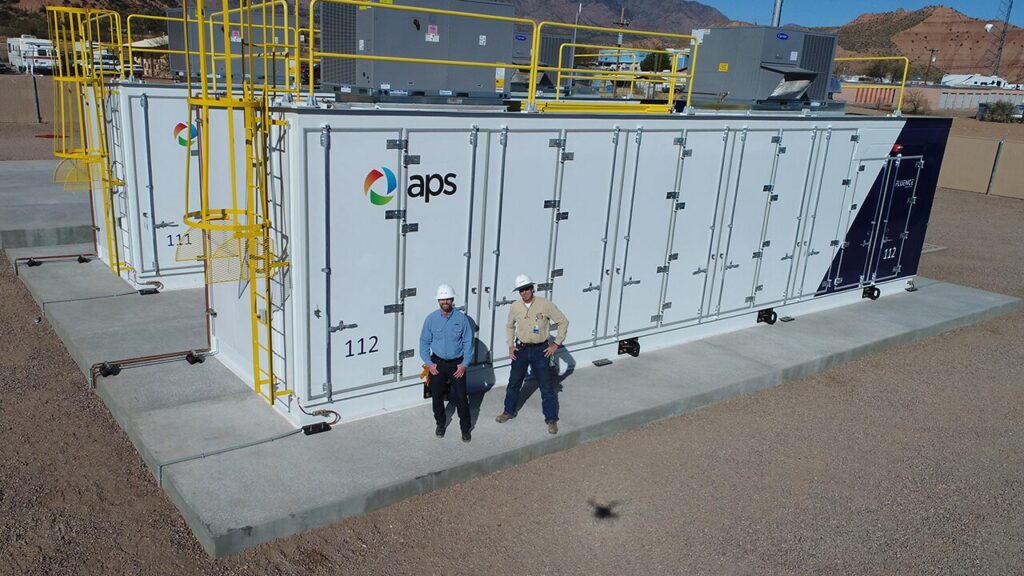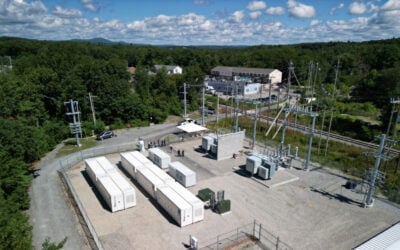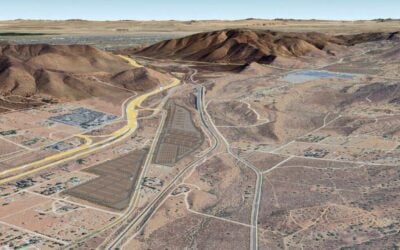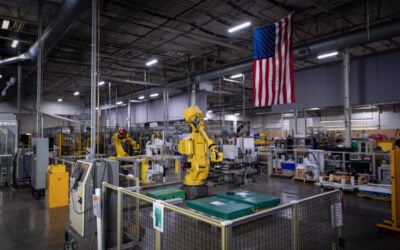
The US Department of Energy (DOE) Loan Programs Office (LPO) has made a conditional commitment for a loan to utility Arizona Public Service (APS), the first part of which would go towards a 600MWh BESS project.
The conditional commitment for a loan guarantee of up to US$1.81 billion to APS, if finalised, will help finance APS’ investments into several new or upgraded transmission projects, renewable power generation, and grid-integrated energy storage systems, the DOE said.
Enjoy 12 months of exclusive analysis
- Regular insight and analysis of the industry’s biggest developments
- In-depth interviews with the industry’s leading figures
- Annual digital subscription to the PV Tech Power journal
- Discounts on Solar Media’s portfolio of events, in-person and virtual
The first investment which will be supported is the construction of the Agave battery energy storage system (BESS) Phase 1 project, a 150MW/600MWh capacity system. It will be co-located with an existing solar PV plant, and provide grid stabilisation, peak shaving and renewable load shifting. The LPO loan may then go towards other unspecified clean energy and system reliability-enhancing transmission projects, including solar PV.
The financing supports APS’ goals outlined in its 2023 Integrated Resource Plan (IRP) and its goal of delivering 100% clean and carbon-free power by 2050, with interim goals of 65% by 2030 and no coal by 2031.
The investment would also support outgoing President Biden’s Investing in America agenda and the DOE’s Justice40 Initiative, which stipulates that 40% of the overall benefits of certain federal investment in climate and clean energy goes to disadvantaged communities, which have faced underinvestment and been disproportionately affected by pollution. APS has committed to providing funded to Native American tribal groups in the areas affected by its coal plant closures.
All utilities receiving an Energy Infrastructure Reinvestment (EIR) loan must also provide assurance that the financial benefits from the financing be passed on to customers, including by reducing upwards pressure on customer rates.
The announcement by the LPO is the latest in a flurry of deal-making for upstream and downstream clean energy projects across the US, with the incoming Trump administration all but certain to curtail the DOE’s activity substantially. Energy-Storage.news’ analysis found in December that DOE grant and loan activity had soared in the wake of Trump’s election win (Premium access), even prior to a huge US$15 billion loan the LPO provided to California utility PG&E.
Utilities lead busy grid-scale market in Arizona
Arizona is quickly becoming one of the most active grid-scale BESS markets in the US, after clear leaders Texas and California. Big drivers include high solar penetration, plentiful land and mandates for clean energy procurement by utilities, which are entering into power purchase agreements (PPAs) or ‘tolling’ arrangements with project owners. Most BESS are 4-hour systems.
In December alone, progress was made on five major BESS projects covered by Energy-Storage.news. Independent power producer (IPP) Enlight secured a US$550 million financing for a solar and 940MWh BESS project, shortly after another IPP Aypa Power did the same for a 1GWh project. Those have PPAs in place with Arizona Electric Power Cooperative (AEPCO) and Salt River Project (SRP) respectively.
Longroad Energy closed on a 111MW solar and 340MWh project which has PPAs with a collection of utilities, the third part of a collection of projects which will total 2.4GWh of energy storage capacity.
APS for its part signed a PPA for a 100MW solar, 400MWh BESS project with IPP Avantus at the start of the month.
Meanwhile, Energy-Storage.news exclusively reported that KKR-backed developer Stellar Renewable Power obtained local permits for 1GW solar, 4GWh storage project in the state (Premium access).






